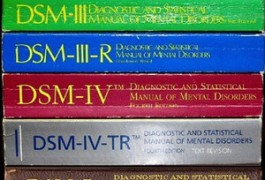Down by law
A new study finds that Dutch children picked up by the police for minor offenses score higher than controls on a questionnaire measuring traits of autism.

A new study finds that Dutch children picked up by the police for minor offenses score higher than controls on a questionnaire measuring traits of autism.

Boys who have autism-like social deficits at 2 years of age retain about the same level of social impairment when they reach age 20.

Researchers have optimized an early social screening questionnaire to distinguish autism from other developmental disabilities in preschool-aged children.

The six diagnostic measures used to distinguish Asperger syndrome from high-functioning autism do not identify a unique subset of people, according to an analysis of 69 studies, published 2 August in Autism.

Collapsing the three core domains of autism — impairments in social interaction, communication deficits, and repetitive and restricted behaviors — into two makes no difference in the accuracy of diagnosis, according to a statistical analysis published 20 August in the Journal of Autism and Developmental Disorders.

Researchers can use the Manchester Inventory for Playground Observation, a questionnaire that rates children’s interactions with their peers, to reliably measure social skills in children with autism.

Toddlers with autism are less likely to use gestures to communicate than are typically developing children and those with developmental delay or specific language impairment.

Autism studies tend to focus on one part of the spectrum, often excluding those who also have other conditions such as anxiety, obsessive-compulsive disorder or intellectual disability. The result, some experts say, is piecemeal findings that don’t fit together to generate a whole picture.

Infants with fragile X syndrome spend more time looking at a toy before switching their attention elsewhere than do healthy controls, according to a study published 1 July in the Journal of Autism and Developmental Disorders.

Only a fraction of autism studies use the gold standard tests to diagnose the disorder in study participants.